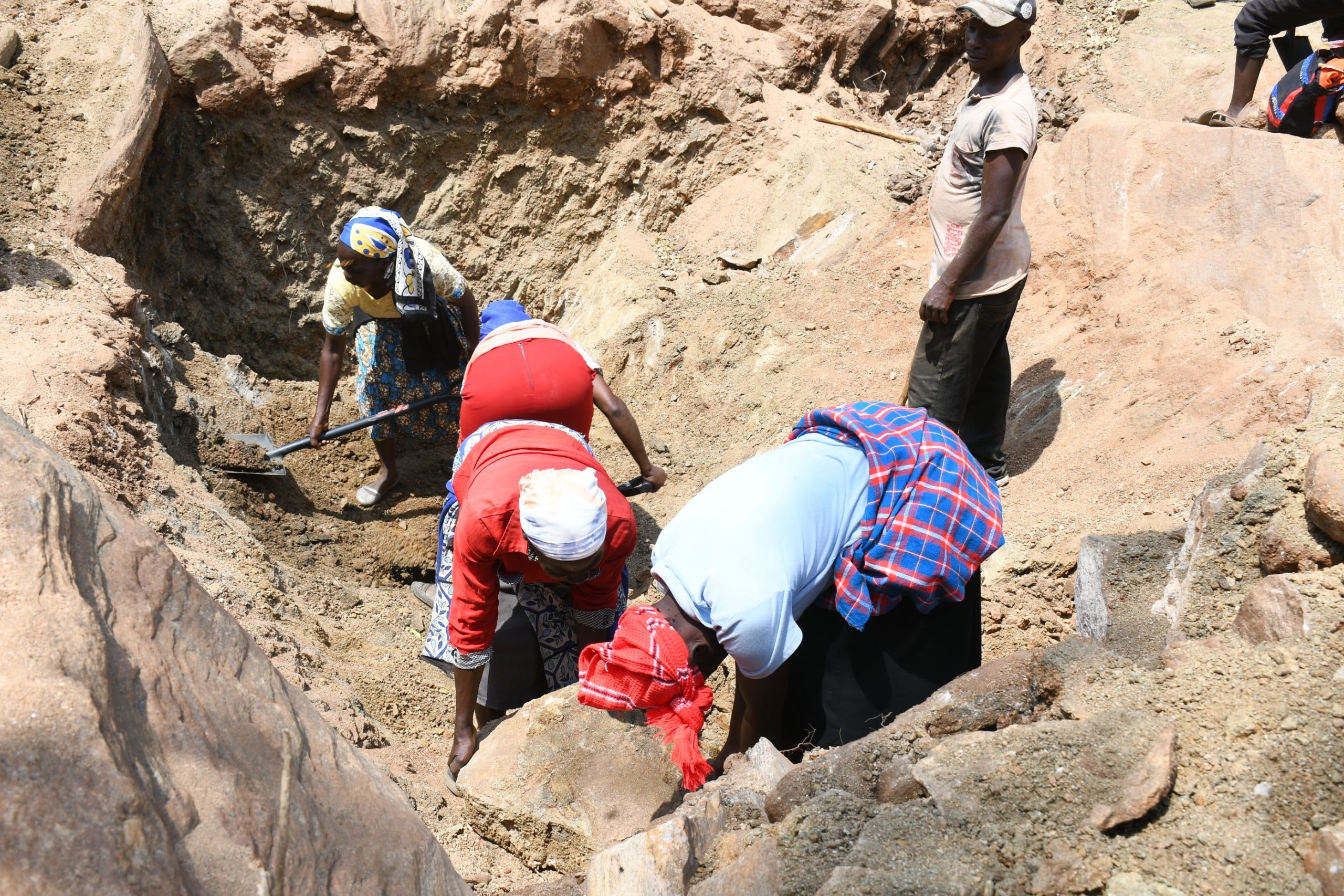It takes the 1,200 community members living in the Mwandalwa Community an average of two hours to collect water from the closest dug well where they can find safe water. This is not a feasible solution for most in the community, so the majority of people choose to collect water from a scoop hole dug into a riverbed, which takes forty minutes on average instead.
As you can imagine, the scoop hole presents multiple challenges, primarily contamination. It's an open-source shared by everyone and animals, a risky combination that leaves their health hanging in the balance.

People and animals share the same water source.
"The scoop hole is not protected and is easily contaminated through animal and human activity. The water is not clear with a saline taste and foul odor. Due to drinking water from contaminated sources like scoop holes, the residents often contract infections like typhoid, amoeba, and dysentery," shared Field Officer Alex Koech.
Contaminated water is not the only issue. It is also a time-consuming, labor-intensive task that steals people's energy and leaves them little time for other important things in their daily lives.

Children waiting for a turn to collect water at the scoop hole.
"Women have to wake up as early as 5 am to fetch water and return home in the afternoon. This consumes most of their time and energy; thus, [they] cannot fully participate in household chores, hygiene, herding livestock, or preparing their lands. The school-going children also spend [most] of their evenings and weekends fetching water for the family, which has negatively impacted their academic performance in school," Alex continued.
"Water is life because we need it for cooking, drinking, and irrigating our crops," said 74-year-old farmer Jemima Mbete Kitele, who is acutely familiar with what it is like to live yearning for water.

Jemima scoops water to take home.
"We can only make two trips or less per day because of the steep terrain and long distance from the waterpoint," said Jemima, describing how having access to limited water has impacted her daily life.
"During last year in the drought period, the water in scoop holes reduced. We had to suffer for several months without a nearby source of clean water."
Jemima desperately needs a clean water source she can rely on. She also needs that resource to be nearby so she can quickly collect water and return to other vital tasks in her day, like caring for her crops, her home, and her family.

Solving the water crisis in this community will require a multifaceted system that will work together to create a sustainable water source that will serve this community for years to come.
Steps Toward a Solution
Our technical experts worked with the local community to identify the most effective solution to their water crisis. Together, they decided to construct a sand dam and a protected dug well.
Sand Dam
Sand dams are sought-after, climate-smart, and lasting water solutions, providing hope and resilience to communities in arid Southeastern Kenya. Think of them like giant sandboxes constructed in seasonal rivers that would typically quickly dry up after the rainy season. Instead of holding water like traditional dams, they collect sand and silt.
When infrequent rains do come, these dams catch a percentage of the river's flow, letting most of the water continue downstream to other communities. But here's the magic: the sand they collect acts like a natural filter, holding onto water long after the river's gone dry. Then, wells are constructed nearby, creating a reliable water source even during the driest times.
And the benefits don't stop there! In communities impacted by climate change, sand dams replenish groundwater and prevent soil erosion. Even during severe droughts, the consistent water supply from these sand dams allows farmers to thrive, giving way for enough food not only for their families but also to sell in local markets.
The most remarkable aspect of sand dams is how they involve the local community every step of the way, giving them a sense of ownership and pride in solving their own water shortage and managing their own water resources.
This sand dam will be connected to a protected dug well to make the water more accessible.
What Makes This Project Unique
In sand dams with an adequate supply, a submersible pump can be installed to tap into the underground water and pipe it into public piped water kiosks. These kiosks expand the reach of this water infrastructure, allowing more people to access clean, reliable water closer to home. The size and location of this sand dam give us hope that it will hold a lot of water when it matures - possibly even enough to pipe water to the community in the future. In anticipation of that, we are installing some extra infrastructure that would enable the future development of solar-powered water kiosks.
Community Education & Ownership
Hygiene and sanitation training are integral to our water projects. Training is tailored to each community's specific needs and includes key topics such as proper water handling, improved hygiene practices, disease transmission prevention, and care of the new water point. Safe water and improved hygiene habits foster a healthier future for everyone in the community. Encouraged and supported by the guidance of our team, a water user committee representative of the community's diverse members assumes responsibility for maintaining the water point, often gathering fees to ensure its upkeep.

 Sand Dam
Sand Dam
 Rehabilitation Project
Rehabilitation Project



















